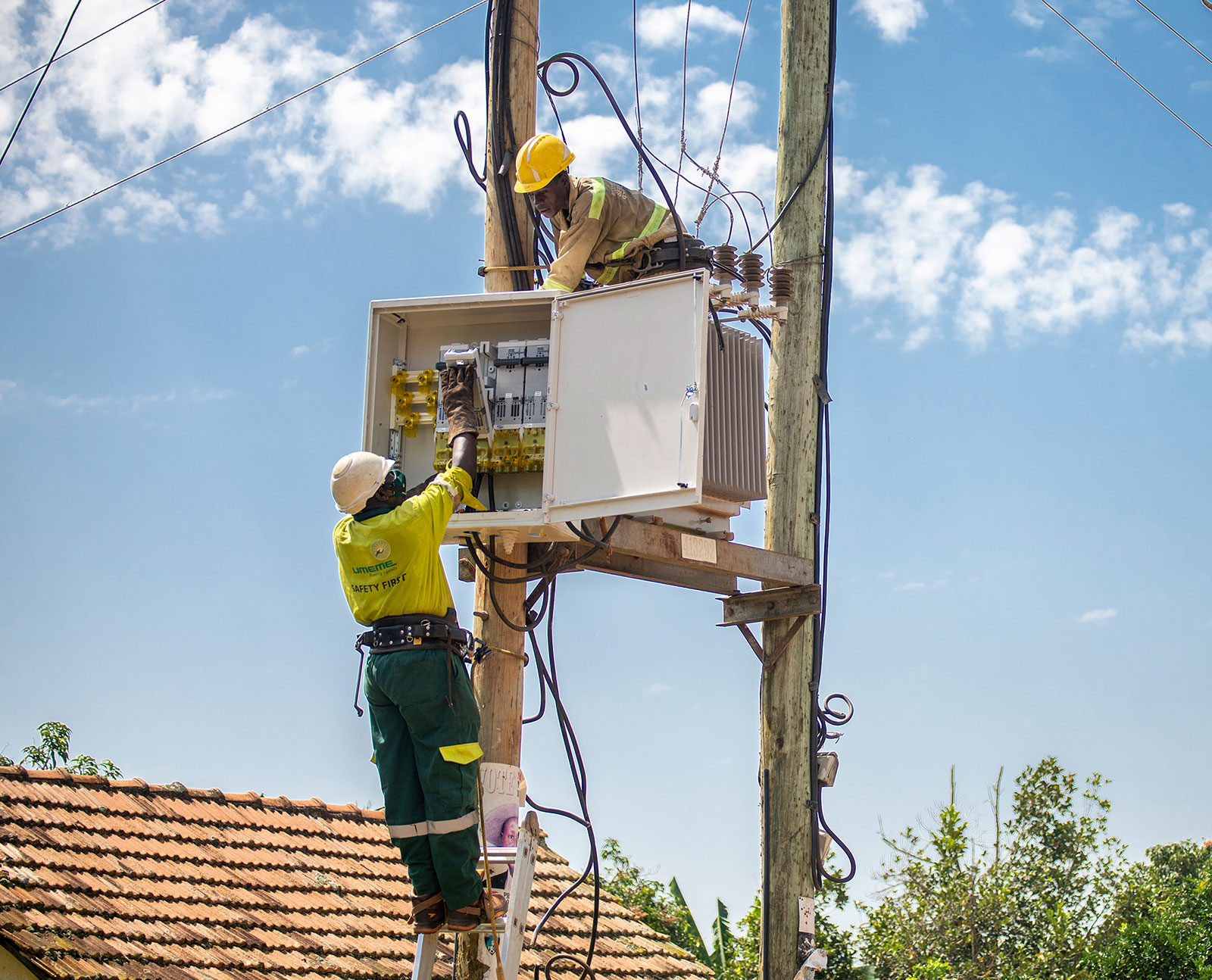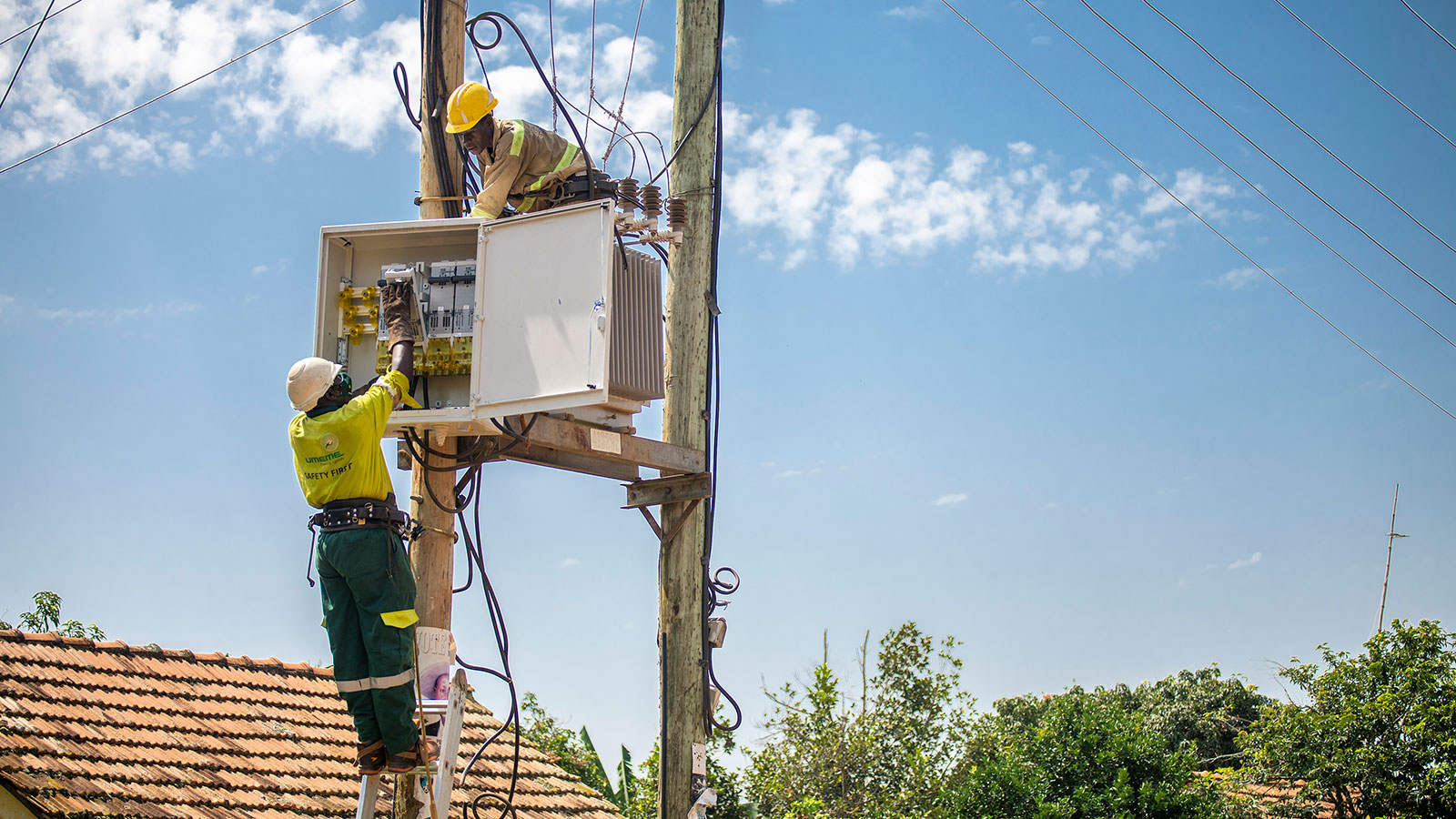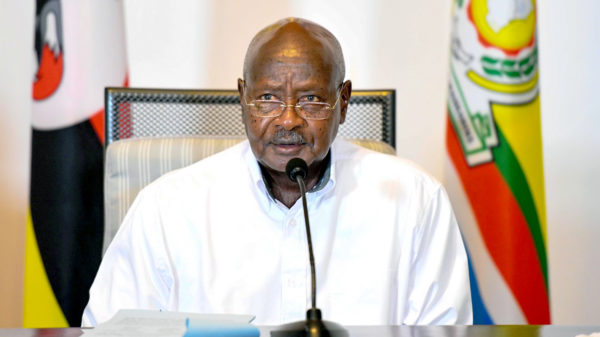Those in charge of electricity distributor Umeme Limited must be sleeping uneasy in light of the tough stance the government has adopted as negotiations for a new concession progress.
A couple of weeks ago, the government tabled before Parliament a Shs256.2b request as part of a phased buyout in preparation for the termination of Umeme’s contract.
The company has been in charge of the bulk of Uganda’s power distribution since the year 2005, running a 20-year concession that expires in 2025.
Under the Electricity Act, a licence in the sector cannot exceed 40 years, meaning that Umeme can still get another 20 years. It started to aggressively pursue a concession renewal in 2018, especially in view of firm interest from at least two Chinese firms.
Umeme, whose parent company is in South Africa, has over the years worked to make itself more Ugandan and even sold some shares to Ugandans, with the National Social Security Fund investing a considerable amount of workers’ money into its operations. Such actions should insulate the company against possible drastic action by the government, one would think.
On the other hand, Umeme has been criticised by its clients and even public figures over the years. In a probe that Gen Salim Saleh did on the power sector and reported on in 2009, for instance, he criticised Umeme for failing to bring down power losses and even accused it of misstating its investment into the sector.
Power intermittently goes off and Umeme’s team on social media, especially on Twitter, are often busy explaining why and offering assurances that it will be restored soon. One citizen that was aggrieved on Sunday night and sent out a complaint against Umeme was Ramathan Ggoobi, the permanent secretary of the ministry of Finance and Secretary to the Treasury. Ggoobi tweeted: “I think Umeme has failed to ensure quality of electricity. How can power go off at the moment Senegal was scoring the deciding penalty!! Really how?!”
Was that an innocent comment or was Ggoobi speaking with knowledge of things to come?
When Umeme started pushing for a concession renewal in 2018, it argued that the ambiguity around its contract situation made it difficult for it to convince investors and financiers to release long-term capital to it.
The government, acting through Finance Minister Matia Kasaija, subsequently put together a team at the end of 2019 to conduct the negotiations for a concession renewal vide a directive from President Museveni.
The team comprised officials from the Energy and Finance ministries, Attorney General’s office, Uganda Electricity Distribution Company Limited, Uganda Electricity Transmission Company Limited, and the Electricity Regulatory Authority. Umeme also constituted a team to present its interests.
At the centre of the negotiations were three issues; return on investment (RIO), energy losses, and the new concession duration.
The negotiations, according to people familiar with the matter, had been going on well until this year when senior government officials started to appear to scuttle what had been thought to be a done deal.
First, there had been murmurs that hinted on a possible termination, emphasised by President Museveni’s unhappiness about high power tariffs. This line took on a new life with the tabling before Parliament of the request for finances to buy out Umeme.
While appearing before the Parliamentary Committee on Environment and Natural Resources on January 18, Energy State Minister Sidronius Okaasai said it was time the government started to take control of the sector .
This, he reasoned, would save the government from spending a lot of money in the event that it chooses to terminate the concession.
“To manage the concession buyout and minimise suffocating expenditure when the Umeme concession ends, it is important that additional investments by Umeme are regulated and/or halted to reduce the final buyout amount,” he said.
Through a Twitter message, Energy Minister Ruth Nankabirwa shared a story link on what Okaasai had presented as if to emphasise this was the government’s position.
It should be noted that the government had not indicated it is ending the negotiations.
In fact, sources say, negotiations between the teams have been ongoing, with the last meeting happening recently.
“They have been discussing. From what I know there were discussions last Friday [January 21] and there is another scheduled this week [in January],” a source familiar with the matter but requested anonymity to speak freely said last week.
Observers who are knowledgeable on the matter say statements from the Ministry of Energy might be picking President Museveni’s thought, who has previously voiced frustration, especially with Umeme and Bujagali Hydro Power Project, which he blames for high electricity tariffs.
For now, the Sh256.2b request has been shelved because the Parliamentary committee reasoned that it was important that the government perform a comprehensive study of Umeme’s operations instead of pushing through a buyout.
In rejecting the request, the MPs had argued that, as a requirement of the concession, the government had to conduct a comprehensive study in the last three years of the concession to inform a decision to renew or terminate the concession.
The MPs also argued that the government had not indicated whether it would terminate Umeme’s concession or not.
Irene Batebe, the Ministry of Energy permanent secretary, had also told the parliamentary committee that the Umeme buyout will cost $215m, noting that the government was also planning to start regulation of further investments by Umeme to ensure that it doesn’t have to pay a lot of money in case the company has to be shipped out.
The Auditor General has also previously warned that the absence of clear policy guidelines from government on how to buyout Umeme at the end of the concession could subject Uganda to high interest rates or be forced to unfavourably extend the power distributor’s contract.
In his audit report for the period ended June 2019, Auditor General John Muwanga warned UEDCL that Umeme’s buyout amount was escalating yet the concession was nearing its end.
“From a review of Umeme audited financial statements for the year ended December 31, 2018, it is estimated that as at that date, capital investments amounting to Shs697b have not been recovered through the tariff methodology. This liability is expected to escalate further given that Umeme projects to make additional investments of $450m,” the Auditor General wrote in the report, urging UEDCL to mitigate the escalating amount before it gets late.
One view is that contract termination signals are written all over the negotiations and, perhaps, Umeme should expect the worst going forward. The other view is that the government is just raising the stakes.
President Museveni has in recent years adopted hard-nosed negotiation tactics when dealing with foreign companies. He has shown this over the years during the negotiations with oil companies, dragging out the process to extract the best deal possible. The telecom company MTN also recently tasted Museveni’s tough bargaining tactics, eventually paying the maximum $100m that Museveni had demanded before their license was renewed.
But be that as it may, in the energy sector, the government has already indicated that it will not renew Eskom’s concession, under which a South African company, manages assets of Nalubaale and Owen Falls dams.
Therefore, the push and shove might be an indication for the government’s desire to take back control of electricify operations to eliminate what President Museveni has previously called “middlemen”.
Sources familiar with the matter indicate that the government might return distribution operations to UEDCL or bring in new concessioners with adjusted terms.
It is understood that a number of Chinese firms have been courting the government for a deal to take Umeme’s place, to the extent of offering to provide all the cash that might be needed to buy out Umeme.
Before all this, sources say, the government during negotiations last year offered Umeme a 10% return on investment, which would be a sharp revision of the 20% return on investment that the company pockets out of the current concession. Sources say Umeme indicated that 10% would be too low.
The return on investment and the duration of the new concession, sources have indicated, had been contentious and drag-ons all through the negotiations.
As of December 2021, Umeme had made investments worth $547.5m out of which it had recovered $331m.
Therefore, in the event that the concession is terminated, the government will have to pay the company the balance of $216.5m within three months of the concession termination, in addition to other buyout expenses.
On the duration of the concession renewal, sources indicate, the government had, during the negotiations last year, offered Umeme an extension for 15 years, but the power distributor had been negotiating for at least 18 or more years.
Nothing is decided yet. Time will tell.

Explainer: How power sector works
In a 2006, Simon D’Ujanga, the then state minister for Energy, told a meeting of energy experts how it had become extremely difficult to operate Uganda’s vertically integrated electricity sector.
The sector, he said, had become heavily reliant on a single unit – Uganda Electricity Board (UEB) – to regulate, generate, transmit and distribute power in a period where the country had started to experience shortages against low investment.
He said UEB’s failure to sustainably deliver power to about 220,000 households – less than 9 per cent of the then 28 million Ugandans – required deeper probing. Simon D’Ujanga and others blamed UEB’s being a monopoly for most of its failures.
In his paper – Power Sector Reforms – D’Ujanga, an electrical engineer who was deemed to have deep knowledge of energy needs and challenges, explained why the government had taken the decision to dismantle UEB.
By June 1990, the government was convinced that it was time to divest about 140 state-owned parastatals – including UEB – in a move that the World Bank and the International Monetary Fund (IMF) had advised would help governments of poor countries save money and make the divested businesses more efficient.
In the particular case of electricity, the creation of the Power Sector Restructuring and Privatisation Strategy in 1999 sought to, among others, reform and redeem the power sector out of its financial bleeding, create supply capacity, improve reliability and quality of electricity and attract private capital. It also sought to explore the possibility of generating enough power for export.
The reform process took the form of repealing the 1964 Electricity Act, and the enactment of the Electricity Act of 1999.
The 1999 Act established the Electricity Regulatory Authority (ERA) to regulate the sector by, among other things, issuing licenses for generation, transmission, distribution, supply, imports and exports of power.
It also provided for the review and approval of power tariffs under ERA as well as establishing and enforcing sector standards and advising the government on needs of the electricity sector.
In 2001, the UEB was broken up to create successor companies, among them the Uganda Electricity Generation Company Limited (UEGCL), to take charge of the generation subsector; while the Uganda Electricity Transmission Company Limited (UETCL) would operate transmission infrastructure above 33 kV. Also created was the Uganda Electricity Distribution Company Limited (UEDCL), which would take charge of the distribution network of 33 kV and below.
Whereas the transmission subsector remained largely in the hands of the government, supported by donors, the generation and distribution segments were collapsed further to allow for the entry of private capital, paving the way for the entry of South African companies Eskom (generation) and Umeme (distribution).
In 2003, the government signed a 20-year concession with Eskom, to maintain and operate the Jinja-based Kira and Nalubaale dams owned by UEGCL. In the agreement which was signed, Eskom would pay an upfront transaction fee, commit to an agreed investment programme and pay a monthly concession fee to UEGCL for the assets it operates, as well as receive from UETCL a monthly capacity payment for the power it sells.
Then in 2004, UEDCL signed a concession with a Umeme-led consortium, in which UEDCL would lease its assets to Umeme while UETCL, being the sole power supplier, would draw up a power sales agreement with Umeme. The concession also required ERA to licence Umeme to distribute, supply, and embedded generation.
Beyond Umeme, other companies such as the West Nile Rural Electrification Company, Bundibugyo Electricity Cooperative Society, Kyegegwa Rural Energy Cooperative Society, Pader-Abim Community Multi-Purpose Electric Co-operative Society, Kilembe Investments, Hydromax, and Kalangala Infrastructure Services, were also issued licences in the distribution subsector. However, their operations were mainly limited to sub-regions.
By 2007, the electricity sector was under extreme stress due to rapid growth in demand against low supply. That same year, the construction of the Bujagali Hydropower Project started, bringing in a new perspective that opened the way for public-private partnerships in the energy sector.
The sector became more open henceforth, seeing an expansion in the number of generation plants from just three in 2001 to more than 40 plants today. Installed electricity capacity has, as a result, increased from 400 megawatts in 2000 to 1,237.49 megawatts as of October 2020, and is expected to grow further to 1,837.49 megawatts after the launch of the Isimba and Karuma dams.
Power sector players say once the power from the Karuma project comes on board, there will be more electricity supply than demand, but power tariffs still remain high and distribution still problematic, with intermittent outages.



